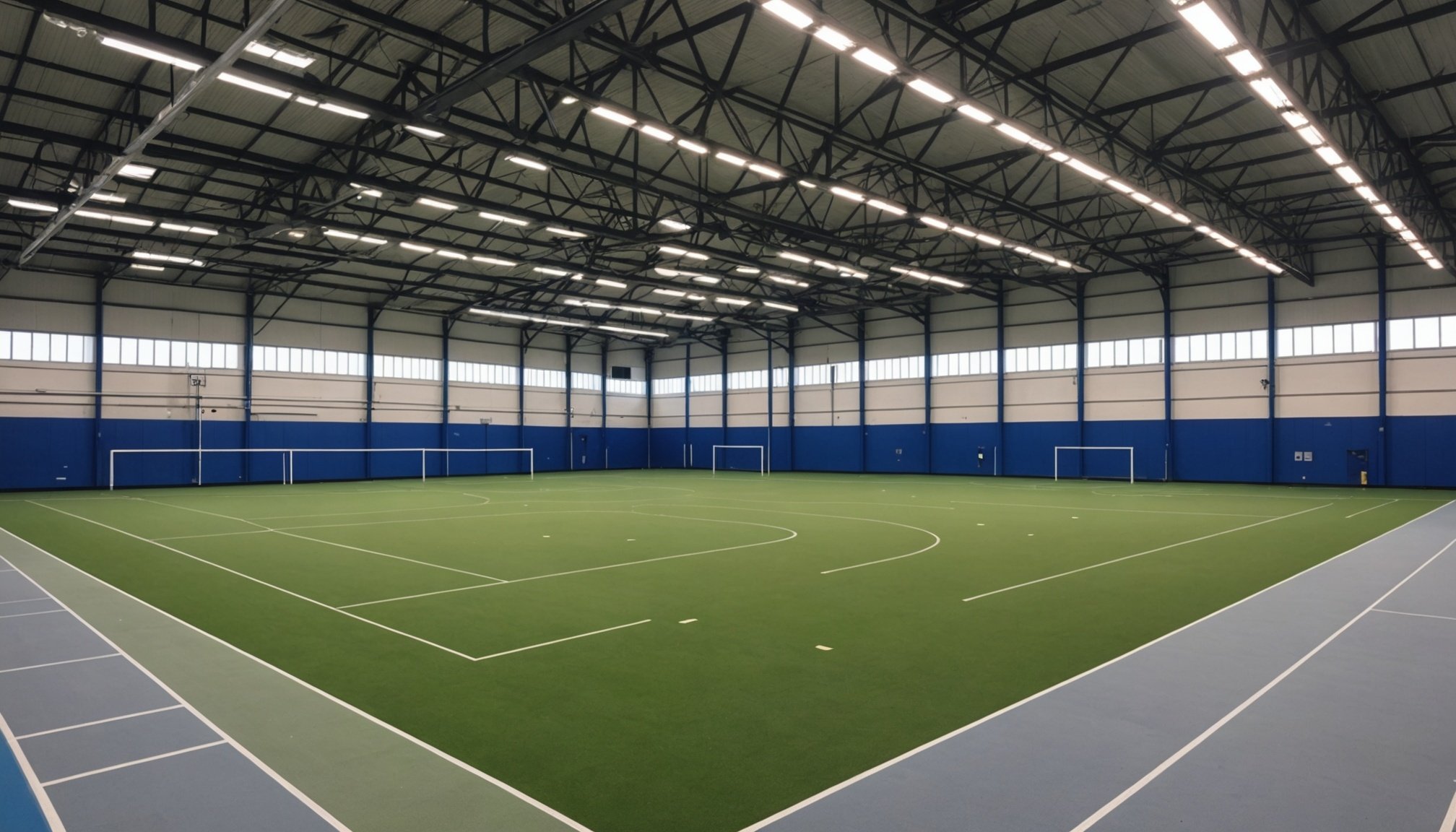Understanding Indoor Air Quality in Sports Facilities
Indoor air quality is an essential aspect of sports facilities that significantly impacts the health and performance of athletes and visitors alike. The indoor air quality refers to the condition of the air inside these environments, characterised by the presence or absence of air pollution. Ensuring optimal air quality is crucial, as it supports physical performance and reduces health risks.
Common Sources of Air Pollution
Sports facilities often face challenges from various sources of air pollution. Common culprits include:
Topic to read : Unlocking performance: the benefits of integrating sports psychology in training for uk snooker players
- Ventilation systems which may circulate pollutants.
- Use of chemical cleaning products.
- Emissions from equipment and nearby traffic.
Understanding these sources helps in implementing effective solutions.
Health Implications
Poor indoor air quality poses several health risks, including respiratory issues and decreased athletic performance. Athletes are particularly vulnerable as they inhale more air during exercise, thus increasing exposure to air pollution. Chronic exposure can lead to long-term health conditions, emphasising the need for proper air management to safeguard both guests and staff in sports facilities. Improving air quality not only promotes a healthier environment but also enhances overall performance and visitor satisfaction.
In parallel : Ultimate recovery techniques for uk marathon runners: proven cool-down methods to enhance post-race recovery
Effective Solutions for Improving Indoor Air Quality
Considering the importance of indoor air quality is essential for a healthier living space. Improving the air within your home can be approached through effective air quality solutions.
Advanced Ventilation Systems
Ventilation systems play a crucial role in managing indoor air. Utilizing both mechanical and natural ventilation strategies can significantly enhance the freshness and cleanliness of indoor environments. Mechanical systems often include exhaust fans and air exchanges that help circulate air, removing stale indoor air and bringing in fresh outdoor air. Meanwhile, natural ventilation relies on architectural features such as windows and vents to improve air circulation.
Air Purification Technologies
To further purify the air, a range of air purification technologies is available. For instance, HEPA filters are highly effective at trapping fine particles like dust, pollen, and smoke, thereby enhancing indoor air quality. Moreover, UV light purification systems can deactivate microorganisms, providing an additional layer of protection against allergens and pollutants.
Humidity Control
Addressing humidity levels is another critical factor in maintaining air quality. Excessive humidity can lead to mould growth, while very low humidity may cause dryness. Implementing humidity control measures, such as dehumidifiers or humidifiers, can help maintain a balanced atmosphere conducive to healthy air. By adjusting conditions to optimum levels, indoor air quality is significantly bolstered.
Case Studies from UK Sports Facilities
The application of air quality improvement strategies in UK sports facilities has demonstrated notable success. These case studies provide valuable insight into the practical benefits and the impact on visitors’ experience and health. One prominent example is the Emirates Stadium in London, a leader in incorporating advanced filtration systems. These systems significantly reduce pollutants, thereby enhancing air quality.
The outcomes from such implementations are profound. Stadiums that have invested in air quality measures report improved visitor satisfaction, owing to the cleaner and healthier indoor environment. Further, these venues have observed a decrease in health-related complaints from attendees, boosting the overall reputation of the facilities.
Through analysis, several best practices emerge for future projects aiming to implement air quality improvements. Collaboration with environmental scientists during the planning stage is crucial for tailoring solutions to specific venue needs. Regular maintenance and monitoring of air filtration systems ensure their prolonged effectiveness. Moreover, increased awareness and education about the benefits of improved air quality can amplify visitor engagement and support for such initiatives.
These case studies showcase successful strategies and underscore the importance of prioritizing air quality in the planning and operation of sports facilities across the UK.
Guidelines for Maintaining Optimal Indoor Air Quality
Ensuring optimal indoor air quality is crucial for both health and comfort. Adhering to maintenance guidelines can help meet the indoor air quality standards.
Routine Monitoring and Assessment
Regular assessments are key to maintaining high-quality air indoors. Compliance requires frequent checks to identify pollutants and assess ventilation efficiency. It’s vital to use sensors and equipment designed for accurate measurement, ensuring you are within indoor air quality standards.
Air Quality Management Plans
Comprehensive plans are essential for effectively managing air quality. These should include procedures for routine monitoring and clear steps for addressing identified issues promptly. By developing detailed air quality management strategies, organisations can ensure compliance with current standards and regulations.
Staff Training and Awareness
Training staff is critical in maintaining air quality. It is important to equip personnel with the skills to recognize and tackle air quality problems efficiently. Compliance depends on staff being aware of the potential issues and understanding the steps required to resolve them. An informed team is able to uphold indoor air quality standards consistently.
Health Benefits and Legal Compliance
Ensuring improved air quality in sports facilities offers significant health benefits to both athletes and patrons. Maintaining high-quality indoor air can alleviate respiratory issues and enhance overall well-being, contributing to better athletic performance and a positive experience for visitors.
Adherence to indoor air standards is crucial for facilities, linking into broader health benefits. In the UK, guidelines and regulations dictate these standards, involving legal compliance to protect both users and facility operators.
Regulations and Standards
Sports facilities must meet specific air quality regulations to maintain safe environments. The UK enforces several standards, ensuring that air quality is safe and consistent. Non-compliance can result in serious implications including legal liability, impacting a facility’s reputation.
Compliance Implications
Meeting the legal compliance requirements not only reinforces a facility’s commitment to health but also enhances its reputation. Athletes are more inclined to use facilities where indoor air standards are a priority, recognising the health benefits of improved air quality. Operators mitigate risks associated with poor air quality by staying within the regulatory framework, thus safeguarding against potential liabilities.











